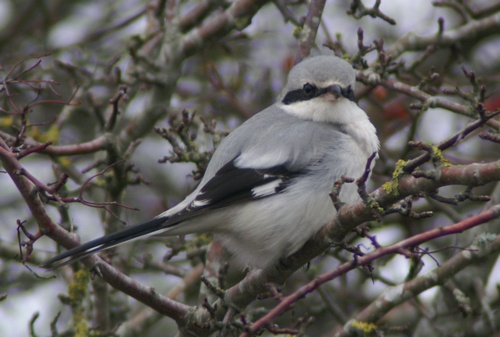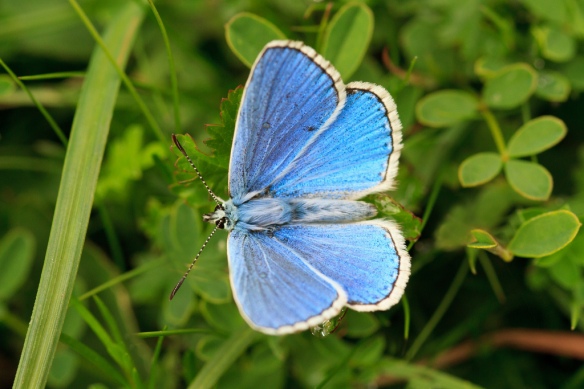The countryside around Glynde and Beddingham is a fantastic place to look out for wildlife of many kinds. We have a rich mix of habitats, including parkland, gardens, deciduous woodland, lowland pasture, waterways and ponds and, most unusually, chalk downland.
Chalk downland habitat is Britain’s equivalent to tropical rainforest. Like rainforest it supports an incredible amount of wildlife and like rainforest it has been largely destroyed or lost and is now one of the world’s rarest habitats. It was created by sheep grazing many centuries ago, and this management is still required today to keep it in top condition. We’re lucky to have this amazing habitat in the parishes.
Here are some of the highlights to look out for in the area.
Butterflies etc
37 of the county’s 45 butterflies have been recorded in the parishes and among them are some of Britain’s rarest species. The gardens in the parish are home to our more familiar species such as the Brimstone, the Orange-tip, the Small Tortoiseshell and the Peacock but the rare chalk downland habitat can hold many other interesting species.
On the Downs look out for a trio of blue butterflies: the diminutive Small Blue, the pale Chalkhill Blue and the dazzling Adonis Blue in spring and summer – they can be found on Mount Caburn and on Beddingham Hill. In late summer look for the Silver-spotted Skipper at the same sites.
Elm trees in Glynde village provide food for the caterpillars of the rare White-letter Hairstreak and any elm treetops are worth checking with binoculars in June for this elusive butterfly.
You may come across many day-flying moths on a walk over the Downs including the black-and-red Burnet moths or the metallic green Foresters. Big bugs such as Cockchafers and Dor beetles are still to be found in good numbers too.
Ranscombe near Glynde used to be nationally famous for a very rare moth. This was the only home in Britain for the Flame Brocade, and Victorian collectors armed with nets and lanterns would roams the Downs here in the hope of pinning this moth in their collections. Their actions, unsurprisingly, soon condemned the species to extinction in Britain around 1900 but it was discovered near Eastbourne over a century later.
Happily, Glow-worms are still easy to find, on a warm mid-summer night – try the verges along Mill Lane, or gardens in Glynde village to see the LED-like lights of the females in the grass.
Flowers
Sussex’s chalk grassland is famed for its plant life. In some areas you can find over 45 species of plant in a single square metre – an amazing diversity. In spring many of the slopes are home to Cowslips, and a little later to orchids such as Common Spotted, Pyramidal and Bee. Early in the summer in Caburn Bottom you may find the rare Burnt Orchid with its white and purple flowers – this is one of the best sites in the whole of Britain for this beautiful flower.
Later in the summer you can see the Round-headed Rampion, another local speciality, which grows alongside flowers such as Field Scabious, Birds-foot Trefoil (food to so many of those butterflies) and Viper’s Bugloss.
Birds
The parishes are home to a good diversity of birds all through the year. Resident birds include Barn, Tawny and Little Owls, Grey Heron, Green Woodpecker, Kingfisher, Peregrine, Buzzard, Kestrel, Sparrowhawk, Skylark, Meadow Pipit, Yellowhammer, Reed Bunting, Mute Swan and the usual common garden species. In recent years Little Egrets have become a fixture too.
In winter, flocks of Lapwing gather on the fields, sometimes several thousand strong. They often share the same fields as the winter thrushes, Fieldfares and Redwings. Wigeon and Teal roost on the larger ponds, and Snipe may be found in the marshier fields, with one or two Green Sandpipers and Water Rails along the Reach. In some recent winters, one of Sussex’s only Great Grey Shrikes has visited.

Great Grey Shrike at Glynde Reach, photographed by Les Bird
In summer, a wide variety of migrant birds breed, including Cuckoo, Swift, Spotted Flycatcher, Reed and Sedge Warblers, Blackcaps, Whitethroats, Chiffchaffs, House Martins and Swallows. With luck, you’ll see our only summer-visiting falcon, the Hobby. The occasional Nightingale and Turtle Dove may still be heard on the levels towards Laughton, with one or two pairs of Lapwing, though sadly many birds that used to nest including Snipe, Redshank and Yellow Wagtail appear now to have been lost.
Other birds pass through in spring and autumn. Wheatears, Whinchats, warblers and Redstarts tend to rest on the Downs, while the odd Honey Buzzard or Osprey will more likely just be seen in the air. Red Kites are seen most often in spring, but you could chance upon one at any time.
Other unusual birds to have been seen in recent years include Great White Egret, Bittern, Purple Heron, White-fronted Goose, Short-eared Owl, Hen Harrier, Marsh Harrier, Hoopoe, Wryneck and White Stork. Being on the Downs, not far from the coast and close to a major river valley, means that it’s always worth keeping a pair of binoculars handy.
Where to look
Beddingham and Itford Hill are great places to experience the chalk downland. At Beddingham quarry the Sussex Wildlife Trust are involved with a project to turn this once busy landfill site back into wildlife rich chalk downland.
Mount Caburn (managed by Natural England) and Saxon Down are fantastic examples of chalk downland and if you explore a little further towards Lewes you’ll find Sussex Wildlife Trust’s Southerham reserve – a valley hidden in the rolling folds of the South Downs.
And of course Glynde Reach and the fields that border it are a good place to see a lot of wildlife.
Charlie Peverett & Michael Blencowe
For more on local wildlife, follow @leweswildlife and @firlebirds on Twitter, and visit www.leweswildlife.org.uk/



Fab article, thanks guys.
A most interesting and informative articles
Thank you both, happy strolling.
Hello Charlie
The area of Glynde Reach has always looked interesting to me but what public access is there.along the waterway.
Hi Chris! Not much any more I gather – it used to be fairly relaxed, but there are no official footpaths along the Reach and I’ve recently heard several reports of locals and visitors being warned off. You can see a little from the road bridge at Glynde station of course, and there is a footpath between Glynde and Littledene / Beddingham, but that’s about it I’m afraid.
Many thanks Charlie and Michael.
A really heartening overview of our local species.
Just a thought:
Are we able to identify how our local farmers and landowners might be encouraged and supported in encouraging lapwings, barn and tawney owls back? Around Ringmer25 years back all three seemed much in evidence. Sadly they seem to have disappeared.
As you say, it’s been marvellous that butterlies have had a great time multipying this summer in spite of the early spring bashing with wet and cold weather.
A final question: I’ve heared varing responses to whether or not it’s sensible to provide food for birds throughout the year. Is it daft to suggest for example that by doing so we might actually be ‘over-feeding’ and thereby weakening some bird specied from ‘naturally’ foraging for food – food that may be superior in quality from what we buy-in for them? Accepting autumn and winter support is sensible, are there periods of the calendar when it might be sensible to stop or reduce suplying food?
Responses glady welcome please.
Thanks very much Don
I’m not sure about Tawny Owls, which do pretty well in even built up areas, but for both Lapwings and Barn Owls rough fields and sedgy pasture are what’s required. In terms of encouraging landowners to protect or reinstate that kind of habitat, I’m not sure what the best incentives are, with setaside no more. I’d be interested to hear if anyone else has ideas,
In terms of bird feeding, the RSPB have good advice on this. In summary: feeding all year is good, but we should cut out some foodstuffs (e.g. peanuts and fat balls) in spring and summer. More here http://www.rspb.org.uk/advice/helpingbirds/feeding/whentofeed.aspx.
Cheers
Charlie